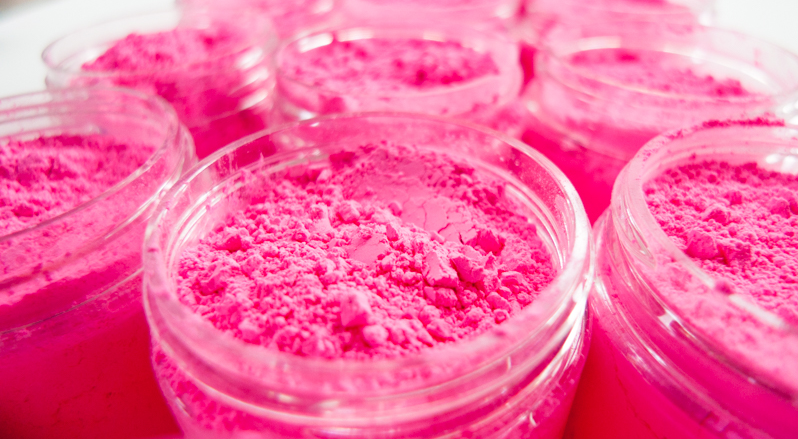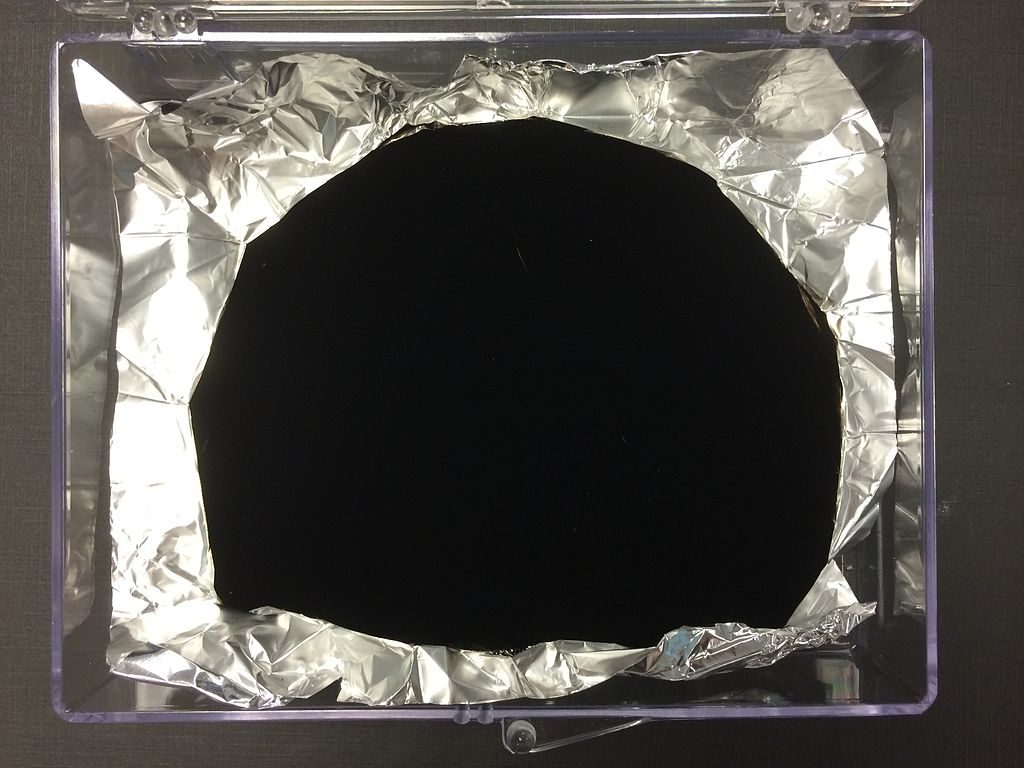The Battle of the Blackest Black Versus the Pinkest Pink

Pictured above isn’t the world’s pinkest pink. But that’s only because your computer or phone screen simply can’t handle the pink. Most computers can display about 16.7 million colors, which is a lot, but at some point, the screens and colors can only get so bright. The pink above — in real life — is brighter than most computers can display. If you want to see just how bright the pinkest pink can get, you’ll have to see it with your own eyes. The good news is as of 2017, you could buy some — for about $5, the maker of the pink, artist Stuart Semple, would sell you a 50-gram jar of it which you can turn into paint. Just click that link.
Oh, but there’s a catch. Here’s the relevant text from the page linked above:
*Note: By adding this product to your cart you confirm that you are not Anish Kapoor, you are in no way affiliated to Anish Kapoor, you are not purchasing this item on behalf of Anish Kapoor or an associate of Anish Kapoor. To the best of your knowledge, information and belief this paint will not make it’s way into that hands of Anish Kapoor.
If you’re Anish Kapoor, you can stop reading — you already know the rest of the story. If not, you need to know about something called Vantablack first
Wikipedia describes Vantablack as “the blackest artificial substance known, absorbing up to 99.965% of radiation in the visible spectrum.” It’s the world’s blackest black, which is to say that, similarly, your screen can’t do it justice. But let’s give it a try — here’s a picture of some aluminum foil, part of it is covered in Vantablack. You may notice that the folds and crinkles covered by the Vantablack are seemingly gone; that’s the point. The Vantablack is so black that you can’t seem to notice anything else.

Vantablack is very useful in a lot of commercial settings, particularly in the areas of cutting-edge science, the specifics of which aren’t really important for our purposes. The important part, for now, is that the color is patented — Vantablack is the intellectual property of an organization called Surrey NanoSystems Limited. The patents are there to protect those commercial interests, not prevent art. But Kapoor had other ideas. In early 2016, he purchased the exclusive rights from Surrey NanoSystems to use Vantablack in art.
That didn’t go over well in the rest of the art world. Other artists, including the pinkest-pink-making Stuart Semple, took to social media and to the press, arguing that Kapoor should share the color — there are a lot of projects for which having the blackest black would come in handy. Here’s what Semple told Gizmodo, and you’ll see he didn’t mince words:
He’s [Kapoor] signed an exclusive agreement with the creators of VantaBlack which blocks any other artist from using it. Nobody forced him or them to enter into an agreement like that. It’s a heinous ego driven pact which stops every other artist after him from working with the inventors of Vantablack on art projects. This is the first time in history all artists have been banned from using a substance. Nobody else is banned only artists that’s a very dodgy way to be going about things.
But Semple wasn’t done. Semple’s sphere of art includes the creation of very color-y colors — the pinkest pink, the greenest green, the yellowest yellow. And, he figured, if Kapoor wasn’t going to share his access to the blackest black, a fair mode of retribution would be to do that exact opposite. Semple would share his colors with everyone who would fork over the $5 or so fee — everyone except Kapoor.
Semple’s efforts didn’t go unnoticed by Kapoor — and Kapoor responded. First, Kapoor somehow obtained a jar of Semple’s Pink. And then, he posted a picture of himself with it to Instagram, making a rude gesture. Instead of further escalating the feud, Semple responded in kind with a non-rude gesture of his own, featuring his own version of a very black black.
Since then, the tensions have cooled a bit, but not entirely; Kapoor is still the exclusive licensee of Vantablack, and Semple’s website (as of 2017) still restricts purchases based on whether you are, or know, Kapoor. So for now, Vantablack and the pinkest pink won’t mix, at least not officially.
Bonus fact: Flamingos and salmon aren’t naturally pink. Flamingos are born gray, but, as Encyclopedia Britannica explains, “the bright pink color of flamingos comes from beta carotene, a red-orange pigment that’s found in high numbers within the algae, larvae, and brine shrimp that flamingos eat in their wetland environment.” Salmon are similar — their meat is naturally gray as well, and wild salmon filets are pink because the fish (when alive) feast on krill and shrimp. Farm-raised salmon fillets, therefore, shouldn’t be pink when they hit our dinner plates. But they are, because consumers would object to gray salmon. Quartz explains: “salmon farmers [ . . . ] spike their artificial diet with pink-ifying pellets” to make the fish look natural — even though in reality, the exact opposite is true.
From the Archives: The Case of the Missing Magenta: The color that’s missing from the rainbow — and why.
Related: Crayons.
